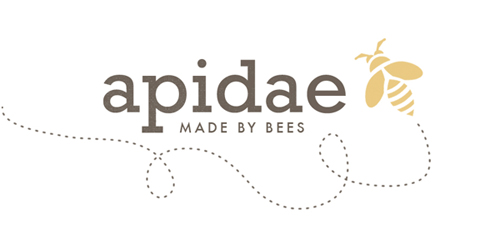Bees get sick too, everything from diarrhoea to constipation. Just as every parent must eventually deal with a sick child, every beekeeper must know what to do when his or her bees aren't feeling so well. So during my last class, we talked about the most common bee ailments.
Knowing what healthy brood looks like makes it easier to identify anything that doesn't seem quite right in the hive. Healthy cell caps are slightly raised and show the same color depending on the age of the cell. The bees do their best to maintain a healthy hive. If they discover sick, dead or damaged brood, they will open up the cell and remove the sick larvae. Here's where the beekeeper's trained eye must know the difference between a healthy, not yet capped larvae and a cell that has been chewed opened.

First, let's talk about childhood diseases or disease of the brood.
Chalkbrood is a fungal disease. The larvae turn chalk white and are covered with a cotton-like substance. The dead larvae turn hard and can often be found at the entrance to the hive. No medication can be given to prevent chalkbrood. Try spraying the brood comb with honey water to get the bees in cleaning modus. Any heavily infected comb should be removed from the hive.
Sacbrood comes from a virus. The head of the larvae is typically deformed and brown. When removed from the cell, the infected larvae appears to be a sac full of water, thus the name. An additional feeding with honey water can help.
American Foulbrood must be reported to the district veterinary office as it is the most destructive of all the brood diseases. This disease spreads quickly, from cell to cell, from hive to hive. For this reason, you should never try and fight this disease on your own. How can you tell if your hive is infected? Insert a match into the infected cell. If a brown stringy like substance is pulled out, beware.
European Foulbrood is a bacterial infection of the hive but much less serious than American foulbrood. A healthy hive usually survives an outbreak. In contrast to AFB, the dead larvae are easily removed from the cells.
Never feed your bees with honey from another hive! This increases the chances of contracting foulbrood.
But it's not just the kids, the adults can get sick too.
Acarine Mites are small mites that infest the honey bees. They lay up to seven eggs in the airway of the bee. Within a couple of weeks, the mites mate and make more mites and so on and so on. Several generations can live in the trachea of an adult bee. Brother Adam at the Buckfast Abbey in England developed the buckfast bee, resistant to acarine mites.
Nosema is an instestinal infection and is usually only a problem when the bees can not leave the hive to eliminate waste. A sure sign that your bees have nosema is brown or yellow excrement on the flight board of the hive. If the sick bees can't escape the hive in time, they take care of their business right on the comb, thus further spreading the disease within the hive. Formic acid will kill any spores. Comb that has already been excremented upon should be removed.
Dysentry can be confused with nosema as it also results from a long period of time where the bees are unable to escape the hive to relieve themselves. If enough bees have to eliminate their waste within the hive (which the bees really don't want to do), the hive will collapse. A few warm days during winter are vital to the bees' survival. Things get critical when temperatures drop below 10 degrees celsius for more than two to three weeks in a row. An additional feeding with very diluted honey water can help.
While all of the above diseases may or may not infect your hive, you are sure to encounter the varroa mite. During Summer, almost 90% of these pesky mites are on the brood and difficult to treat. In the Fall, the brood becomes less but the varroa mite becomes more and treatment is obligatory. One of the most important jobs of the beekeeper is keeping the varroa mite under control. This already begins in spring by cutting out the capped drone cells as we already discussed here. Beginning in July, keep an eye on the number of mites falling from the bees. You can insert a sticky board under the screened bottom board of your hive. If no more than five mites fall onto the board per day, you can put off treatment with formic acid until you prepare the hive for winter. Otherwise, you should already begin with treatment. Be sure to harvest the last of the honey before beginning with treatment though! The formic acid can be added to the hive in the same manner as the sugar water for winter feeding. Once the bottle containing the formic acid is empty, you can change it out for sugar water. As soon as the bees have emptied the sugar water, you should begin with the second treatment of formic acid, approximately one week later. Older colonies will need to be treated 3 - 4 times, younger colonies only twice. If the treatment was done properly, one mite at the most per day should fall onto the sticky paper.
Oxalic acid is very effective but very strong. Be sure to follow the recommended dosage. Treatment with oxalic acid is often done around Christmas time.

I hope this doesn't prevent anyone from wanting bees. But as with any live creature, they need love and attention.
